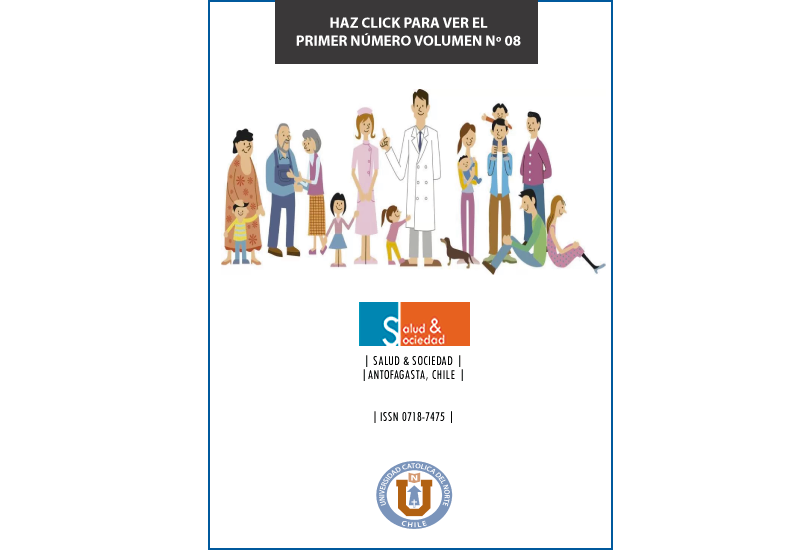¿Qué tanto afecta la fama y el éxito sobre la esperanza de vida?
Caso de estudio: Ganadores y nominados a los premios Oscar
DOI:
https://doi.org/10.22199/S07187475.2017.0001.00003Palabras clave:
Esperanza de vida, Éxito, FamaResumen
La esperanza de vida (EV) es un indicador de la calidad de vida que un grupo tiene, al relacionarse con su desarrollo económico y social. Sin embargo, los efectos del éxito y la fama sobre la EV no son fáciles de evaluar. En esta investigación se analizó un grupo de personas famosas y exitosas: los ganadores y nominados al premio de la Academia de las Artes y las Ciencias Cinematográficas de Estados Unidos (Oscar). El estudio involucró a 1310 individuos, de los cuales se seleccionaron 533 personas fallecidas en las categorías de actrices y actores principales, de reparto y directores, mismos que se contrastaron contra las estadísticas nacionales de la población de Estados Unidos, durante el periodo de 1860 hasta 2016. Los resultados indicaron que ambas poblaciones poseen causas de muerte similares; sin embargo, los miembros del Oscar tienden a decrementar su EV por causas que pueden relacionarse con su estilo de vida, tales como el consumo de drogas y accidentes. Se concluye que la fama y el estrés por mantener un determinado estatus, pueden decrementar la EV de una población, al adoptar estilos de vida con mayores presiones y riesgos.
Descargas
Referencias
Academy Awards. (2015). Academy Awards Database - AMPAS. Recuperado el 10 de mayo de 2016, a partir de http://awardsdatabase.oscars.org/ampas_awards/BasicSearchInput.jsp
Anderson, R. N. (2001). Deaths: leading causes for 1999. National vital statistics reports : from the Centers for Disease Control and Prevention, National Center for Health Statistics, National Vital Statistics System, 49(11), 1–87. https://doi.org/3456pl/098-987
Bipolar Disorder Centers. (2016). How Does Fame Influence Drug Abuse? | Bipolar Disorder Centers | Call 1-888-371-5714. Recuperado a partir de http://www.bipolardisorderscenters.com/how-does-fame-influence-drug-abuse/
CDC, C. for D. C. and P. (1998). Leading Causes of Death, 1900-1998. Natl. Vital Stat. Rep., 48, 1–67.
CDC, C. for D. C. and P. (2015). Overdose Data1999-2014.
Coalition agaisnt Drug Abuse. (2016). Celebrities & Drug related Death. Recuperado el 5 de octubre de 2016, a partir de http://drugabuse.com/featured/celebrity-drug-death-memorial-wall/
Davies, G., Elison, S., Ward, J., & Laudet, A. (2015). The role of lifestyle in perpetuating substance use disorder: the Lifestyle Balance Model. Subst Abuse Treat Prev Policy, 10(1), 2. https://doi.org/10.1186/1747-597X-10-2
DuRant, R. H., Rickert, V. I., Ashworth, C.S., Newman, C., & Slavens, G. (1993). Educational Status and Active Life Expectancy among Older Blacks and Whites. New England Journal of Medicine, 329, 110–116.
Epstein, C. R., & Epstein, R. J. (2013). Death in The New York Times: the price of fame is a faster flame. QJM : monthly journal of the Association of Physicians, 106(6), 517–21.https://doi.org/10.1093/qjmed/hct077
GHO. (2015). GHO | By category | Life expectancy - Data by WHO region. Recuperado el 5 de mayo de 2016, a partir de http://apps.who.int/gho/data/view.main.690?lang=en
Han, X., Small, D. S., Foster, D. P., & Patel, V. (2011). The effect of winning an oscar award on survival: Correcting for healthy performer survivor bias with a rank preserving structural accelerated failure time model. Annals of Applied Statistics, 5(2 A), 746–772. https://doi.org/10.1214/10-AOAS424SUPPA
Hoyert, D. L. (2012). 75 Years of Mortality in the United States , 1935 – 2010.
IMDB. (2016). IMDb - Movies, TV and Celebrities - IMDb. Recuperado el 10 de mayo de 2016, a partir de http://www.imdb.com/?ref_=ft_hm
Layden, J., Carnes, B. A., Ph, D., Brody, J., Hayflick, L., Butler, R. N., … Ludwig, D. S. (2005). A Potential Decline in Life Expectancy in the United States in the 21st Century, 1138–1145.
M. Moreno-Smith, S. K. Lutgendorf, a. K. S. (2011). Impact of stress on cancer metastasis. Future Oncol., 6(12), 1863–1881. https://doi.org/10.2217/fon.10.142.Impact
Miniño, A. M., Arias, E., Kochanek, K. D., Murphy, S. L., & Smith, B. L. (2002). Deaths: final data for 2000. National vital statistics reports : from the Centers for Disease Control and Prevention, National Center for Health Statistics,
National Vital Statistics System, 50(15), 1–119. https://doi.org/May 8, 2013
National Center for Health Statistics. (2015). Health, United States, 2014: With Special Feature on Adults Aged 55-64.
NCHS, N. C. for H. S. (2001). NCHS Ageadjusted Death Rates for Selected Major Causes of Death United States 1900-2013.
New York times. (2016). Obituaries - The New York Times. Recuperado el 12 de noviembre de 2016, a partir de http://www.nytimes.com/section/obituaries
Newsday. (2016). Newsday Obituaries. Recuperado el 12 de noviembre de 2016, a partir de http://www.legacy.com/obituaries/newsday/
OMS. (2011). Estadísticas Sanitarias Mundiales. Ginebra.
OMS, centro de prensa. (2014). Las 10 causas principales de defunción en el mundo. World Heath Organization, 6–8.https://doi.org//entity/mediacentre/factsheets/fs310/es/index.html
Rablen, M. D., & Oswald, A. J. (2008). Mortality and immortality: The Nobel Prize as an experiment into the effect of status upon longevity. Journal of Health Economics, 27(6), 1462–1471. https://doi.org/10.1016/j.jhealeco.2008.06.001
Redelmeier, D. A., & Singh, S. M. (2001). Survival in academy award-winning actors and actresses. Annals of Internal Medicine, 134(10), 955–962. https://doi.org/10.7326/0003-4819-134-10-200105150-00009
Rudd, R. A., Aleshire, N., Zibbell, Jon, E., & Gladden, M. R. (2016). Increases in Drug and Opioid Overdose Deaths - United States, 2000-2014. MMWR. Morbidity and mortality weekly report, 64(50–51), 1377–1382. https://doi.org/10.15585/mmwr.mm6450a1
Sylvestre, M. P., Huszti, E., & Hanley, J. A. (2006). Do Oscar winners live longer than less successful peers? A reanalysis of the evidence. Annals of Internal Medicine, 145(5), 361–363. https://doi.org/10.7326/0003-4819-145-5-200609050-00009
Tosato, M., Zamboni, V., Ferrini, A., & Cesari, M. (2007). The aging process and potential interventions to extend life expectancy. Clinical interventions in aging, 2(3), 401–12. Recuperado a partir de http://www.pubmedcentral.nih.gov/articlerender.fcgi?artid=2685272&tool=pmcentrez&rendertype=abstract
WHO. (2014). World Health Statistics 2014. Recuperado el 30 de diciembre de 2015, a partir de http://www.who.int/mediacentre/news/releases/20
Descargas
Publicado
Número
Sección
Licencia
Los autores continúan como propietarios de sus trabajos, y pueden volver a publicar sus artículos en otro medio sin tener que solicitar autorización, siempre y cuando indiquen que el trabajo fue publicado originariamente en Revista Salud & Sociedad (ISSNe:0718-7475).



_(1).png)





